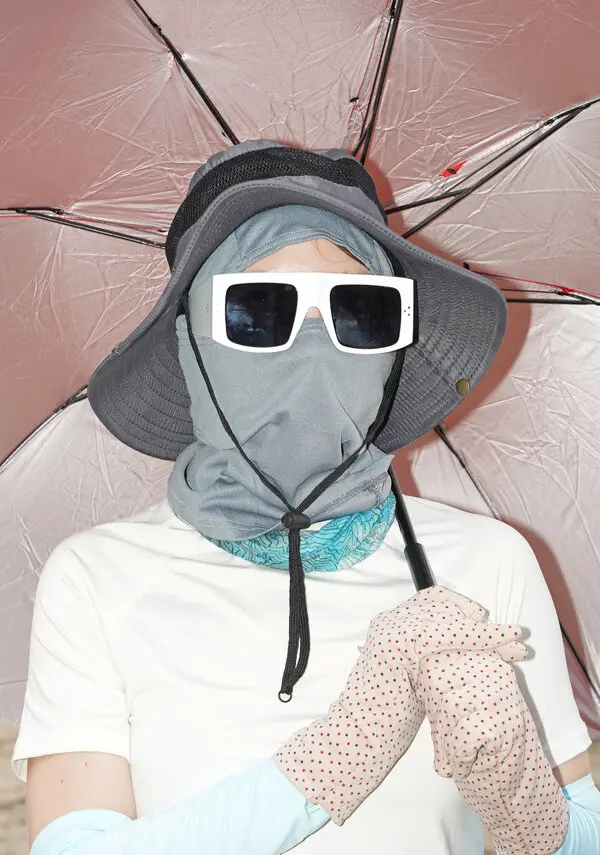Protecting Your Summer Skin
- mssheenachen
- Jul 5, 2024
- 3 min read
The time around the summer solstice is when the sun is out the longest during the day. The summer season is typically associated with vacations or at least time spent outdoors enjoying the air and the sun's rays. Sunlight itself has moderate benefits, like encouraging the natural production of vitamin D, increasing serotonin which positively impacts your mood, and promoting the healing of wounds. A natural occurring pigment in skin called melanin, which acts as a natural sunscreen, absorbs ultraviolet (UV) light from the sun and dissipates it as heat. However, without adequate preparation or protection, too much sun exposure may lead to damage and harm of one's skin. This may show up as a tan or sunburn, which raises the risk of faster aging and even some types of skin cancers.
How likely you are to burn or tan depends on the degree of your sun exposure and the phototype of your skin. The degree of sun exposure can depend on factors like latitude, time of day, ozone level, and density of cloud cover. For example, the sun's rays peak in intensity between 10 am and 4 pm. The phototype of your skin is determined by factors like your original skin's pigmentation, your ability to tan, and your past susceptibility to sunburn. A popular measurement tool for skin phototype is the Fitzpatrick scale, which has been in use since 1975-1976. However, this tool is known to be limited in its applicability, particularly to skin of color, giving the false impression that that skin cancer is irrelevant to these communities and neglecting their skin health and sun protection needs.
Although it may sound logical, it's not the sun's heat that leads to tans and sunburn. Instead, it's the sun's UV radiation. Tans and sunburn are actually inflammatory reactions of the skin from exposure to too much UV radiation. A common misconception is that a tan is a safe and healthy response to sun exposure, but this isn't the case. While sunburns are more obvious, tans also represent a skin injury resulting from the sun's rays damaging the DNA within skin cells and causing mutations. Our bodies can repair some of these mutations, but other surviving cells that escape repair can eventually become cancerous. In the meantime, you may also notice skin cell damage manifest as cosmetic annoyances like redness, wrinkles, and sunspots.
In the United States, skin cancer is the most common form of cancer. People who get sunburned more frequently are at much higher risk for developing skin cancer. UV damage is the central cause of the three most common skin cancers, which are:
1. basal cell carcinoma
2. squamous cell carcinoma of the skin
3. melanoma
The risk of developing melanoma, the deadliest form of skin cancer, doubles for a person who has experienced five or more sunburns in their lifetime.
While sun damage cannot be reversed, you can follow sun safety tips to protect and soothe your skin while it heals, and lower your cancer risk going forward. Expert tips vary according to source, but some include:
- choose a sunscreen of SPF 30 or higher, offers broad-spectrum protection, and is water-resistant
- apply sunscreen at least half an hour before going out into the sun and reapply every two hours
- look for ingredients like titanium dioxide or zinc oxide in your sunblock formula since they "reflect off UV radiation"
- cover your skin with clothes that physically block out the sun, such as wide-brimmed hats, sunglasses, and UV-protective clothing
- seek shade when possible, especially during peak when hours the sun's UV rays are strongest (between 10 am and 4 pm)
Preventing a sunburn is, of course, better than treating one. While it's nice to get outside, just remember to properly prepare your skin for that fun in the sun.
1. Viggiano, T. (2024, May 7). The Science of Sunburns: Why they happen and how to treat them. Mayo Clinic. https://mcpress.mayoclinic.org/living-well/the-science-of-sunburns-why-they-happen-and-how-to-treat-them/
2. Van Thomme, G., & Blackburn, K. B. (2017, March). What happens when you get a Sunburn. What happens to your skin when you get a sunburn. https://www.mdanderson.org/publications/focused-on-health/What-happens-to-your-skin-when-you-get-a-sunburn.h24Z1591413.html
3. Guerra KC, Crane JS. Sunburn. [Updated 2023 Oct 29]. In: StatPearls [Internet]. Treasure Island (FL): StatPearls Publishing; 2024 Jan-. Available from: https://www.ncbi.nlm.nih.gov/books/NBK534837/
4. Skin cancers in skin types IV-VI: does the Fitzpatrick scale give a false sense of security? Goon P, Banfield C, Bello O, Levell NJ. Skin Health Dis. 2021;1:0.
5. Fischer AH, Wang TS, Yenokyan G, Kang S, Chien AL. Sunburn and sun-protective behaviors among adults with and without previous nonmelanoma skin cancer (NMSC): A population-based study. J Am Acad Dermatol. 2016;1–9.
6. Hadhazy, A. (2013, July 9). What causes sunburns?. Life’s Little Mysteries. https://www.livescience.com/38039-what-causes-sunburns.html Assessed and Endorsed by the MedReport Medical Review Board







